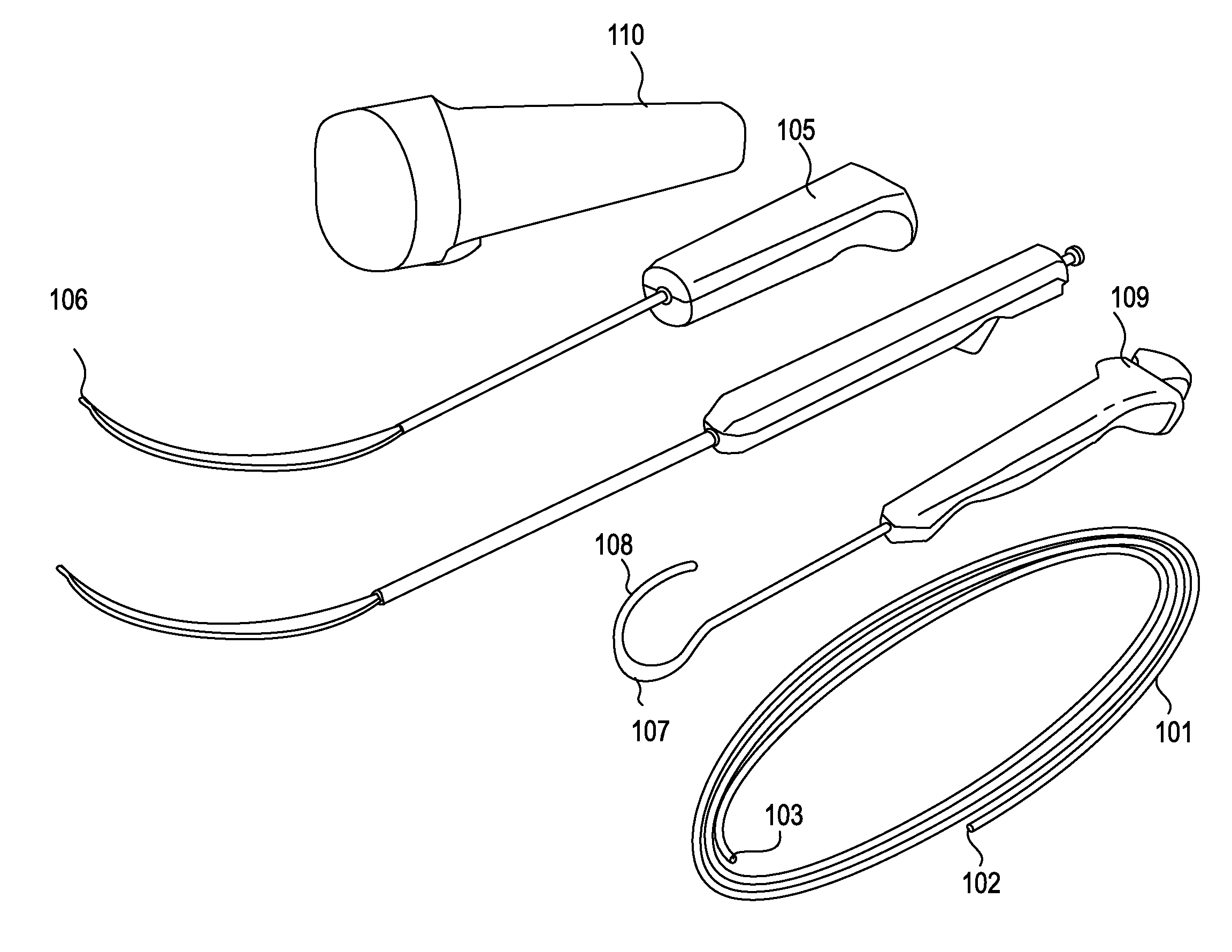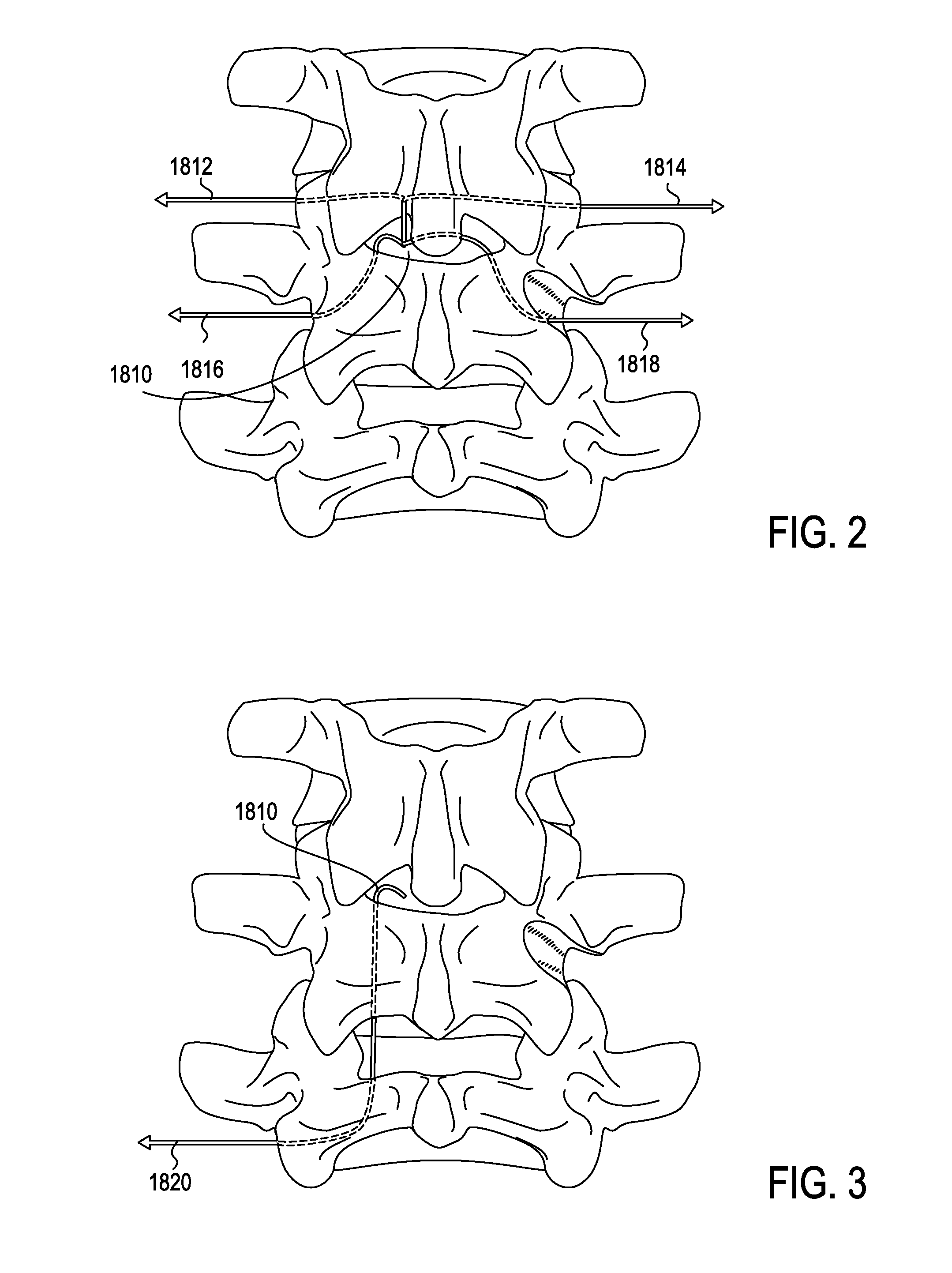Devices and methods for treating tissue
a technology for treating tissue and devices, applied in the field of devices and methods for treating tissue, can solve the problems of difficult to modify certain tissues to achieve a desired effect, more technically challenging procedures, and reduced or even no direct visualization
- Summary
- Abstract
- Description
- Claims
- Application Information
AI Technical Summary
Problems solved by technology
Method used
Image
Examples
Embodiment Construction
[0050]The devices, systems and methods described herein may be use in any appropriate surgical procedure, particularly for the surgical treatment of spinal stenosis. For example, described herein are systems including one or more of the following devices: a guidewire, a probe for positioning a guidewire, and a tissue modification device for use with the guidewire. As described herein, the systems and methods may be used to decompress one or more spinal regions. In particular, any of these devices may be used to decompress nerve roots within the spinal anatomy along various paths. Because these devices are flexible, and may be appropriately sized and shaped to fit within a neural foramen, these devices may be used to accesses appropriate regions of the spine from a single access point (e.g., from the patient's midline or near-midline region). While the systems and methods described herein may used to decompress one or more spinal regions they may also be configured to avoid portions ...
PUM
 Login to View More
Login to View More Abstract
Description
Claims
Application Information
 Login to View More
Login to View More - R&D
- Intellectual Property
- Life Sciences
- Materials
- Tech Scout
- Unparalleled Data Quality
- Higher Quality Content
- 60% Fewer Hallucinations
Browse by: Latest US Patents, China's latest patents, Technical Efficacy Thesaurus, Application Domain, Technology Topic, Popular Technical Reports.
© 2025 PatSnap. All rights reserved.Legal|Privacy policy|Modern Slavery Act Transparency Statement|Sitemap|About US| Contact US: help@patsnap.com



